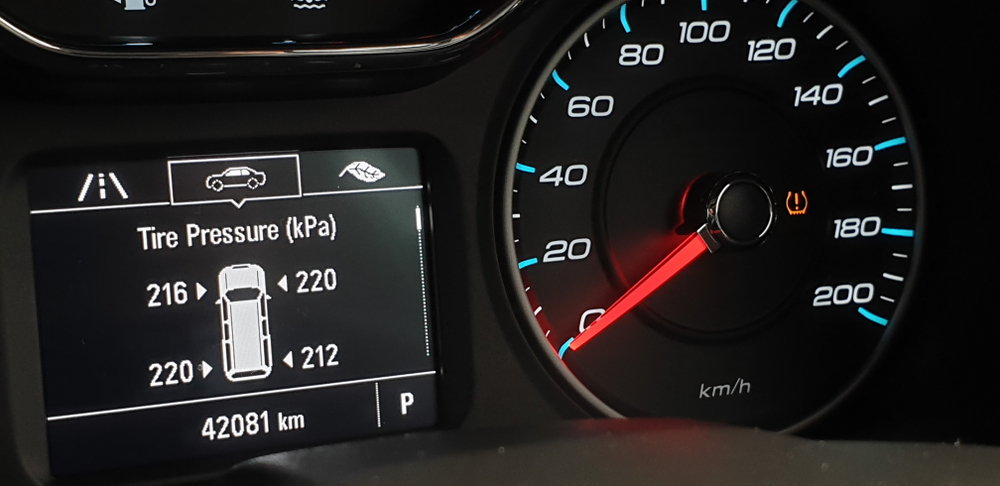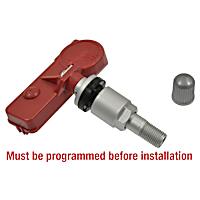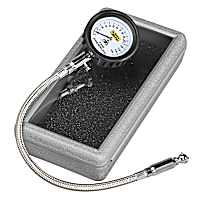A basic precautionary measure before driving your car is checking if the tires have the right pressure. It is also considered the easiest and simplest among the driving safety practices. Maintaining the right pressure helps your car’s fuel economy, handling, and tire wear. Fortunately, having a tire pressure gauge makes it easy to keep it in check. Bringing a tire pressure gauge with you means having the ability to keep your vehicle’s tires in the optimum PSI for maximum fuel efficiency.
A vehicle with properly inflated tires produces better fuel economy over underinflated or overinflated tires because it makes perfect contact with the road and in turn, makes the car maneuver better. If you’re planning on cutting your fuel budget, having a tire pressure gauge in your glovebox is one of the simplest things you can do that really helps. Having the right amount of air on your tires also helps avoid accidents.

What is a tire pressure gauge?
Before cars had built-in tire pressure monitoring systems, tire pressure gauges were the only apparatus that gave drivers numerical information about their tire pressure. These handheld devices have a valve at the tip and a measurement indicator, which varies depending on the type of gauge you’re using. Despite the varying forms, all tire pressure gauges consistently use pound-force per square inch (PSI) as their unit of measurement.

Types of tire pressure gauge
Thanks to innovation and creativity, tire pressure gauges come in several designs. The three main types, Stick, Dial, and Digital, each have their own distinct look, mechanism, and complexity.
Stick-type tire pressure gauge
A stick tire pressure gauge is simple to use, compact, and lightweight. It uses a pretty straightforward mechanism featuring an internal measuring bar driven by a metal spring. The inside bar slides out the opposite end of the gauge as pressure flows through the valve, with the spring preventing it from exiting the gauge due to rapid pressure changes.

Dial-type tire pressure gauge
Dial pressure gauges are probably the most conventional of the three. If you search for an image of a tire pressure gauge, the dial gauge is the type you’re most likely to see. This variation of pressure gauge features a round, clock-like head on the opposite end of the valve. The measurement indicator comes in the form of a rotating arm pointing at the circling numerical values—just like a weighing scale or an analog watch.
Digital pressure gauge
A digital pressure gauge is easier to read, as it projects the exact PSI reading on an LED screen. It works similar to the other two in that you’re also required to connect the gauge’s valve to the tire valve. The only downside to using a digital gauge is that you have to always make sure that the battery is still good. A digital gauge with low battery may render an inaccurate reading.
Do I still need a tire pressure gauge even when there’s already a TPMS in my car?
Some people might think that tire pressure gauges are no longer relevant in this day and age due to the presence of the tire pressure monitoring system (TPMS) in modern cars. While there certainly is some truth to this, carrying a manual tire pressure gauge with you is still a good idea in case your car’s TPMS fails, or when you need to check the tire pressure when the engine is off—something the TPMS can’t do. In short, a tire pressure gauge serves as your backup when the unexpected happens.

Verdict
Even with the presence of advanced technology, tire pressure gauges are still irreplaceable due to their convenience. It is your responsibility as a driver to have some sort of a “first aid kit” for your car. Think of the tire pressure gauge as your tires’ thermometer that tells you something is wrong—aside from your gut-feeling. Experts say that you should check your tires every month because different factors such as weather, altitude, and impact breaks, could affect them.
Where to Get a New Tire Pressure Gauge for Your Vehicle
A few figures off your tire’s pressure values can make a huge difference. The right tire pressure is crucial for safe driving, and it ensures that your vehicle can perform at its best.
If you don’t have a tire pressure gauge yet, consider getting one right here at CarParts.com. We have a great selection of OE-grade tire pressure gauges carefully handpicked by industry professionals, so you’re sure to get one that’s built to last.
Shopping for car parts, accessories, and upgrades has never been this easy with CarParts.com. All you have to do is enter your vehicle’s year, make, and model into our vehicle selector to narrow down the catalog to compatible products for your ride. You can also use the search filters to narrow down the results according to your preferences.
Never worry about going over budget when you shop from us. All our products come with a lifetime replacement and low-price guarantee to help you get the best value for your money.
Order now, and we’ll deliver your tire pressure gauge straight to your doorstep in as fast as two business days. Check out our products today!
Products Mentioned in this Guide
Any information provided on this Website is for informational purposes only and is not intended to replace consultation with a professional mechanic. The accuracy and timeliness of the information may change from the time of publication.


 Tire Pressure Monitoring System
Tire Pressure Monitoring System
 Tire Pressure Gauge
Tire Pressure Gauge















